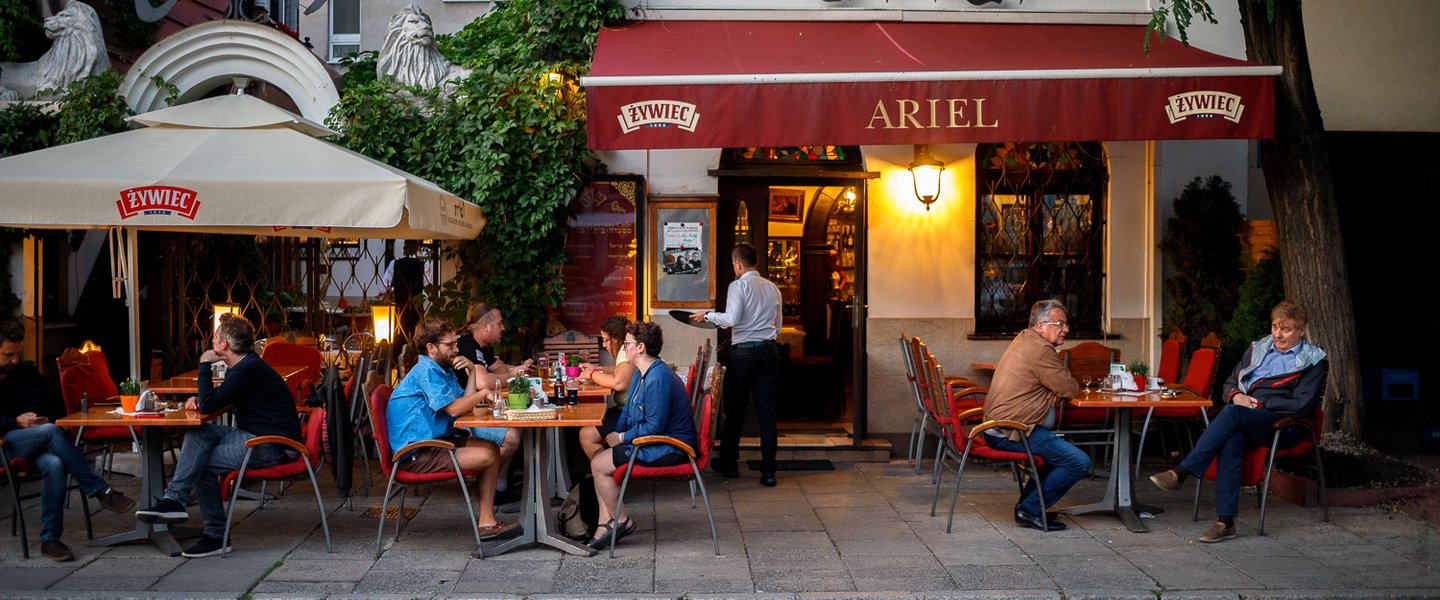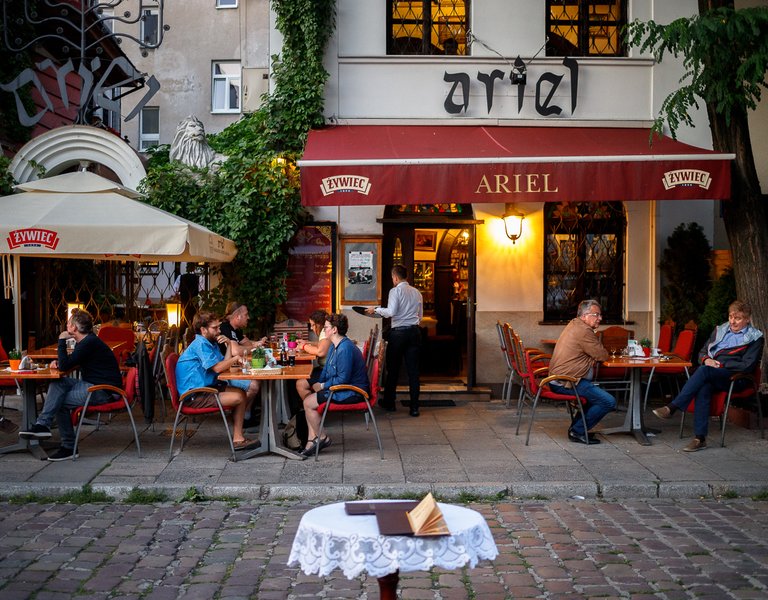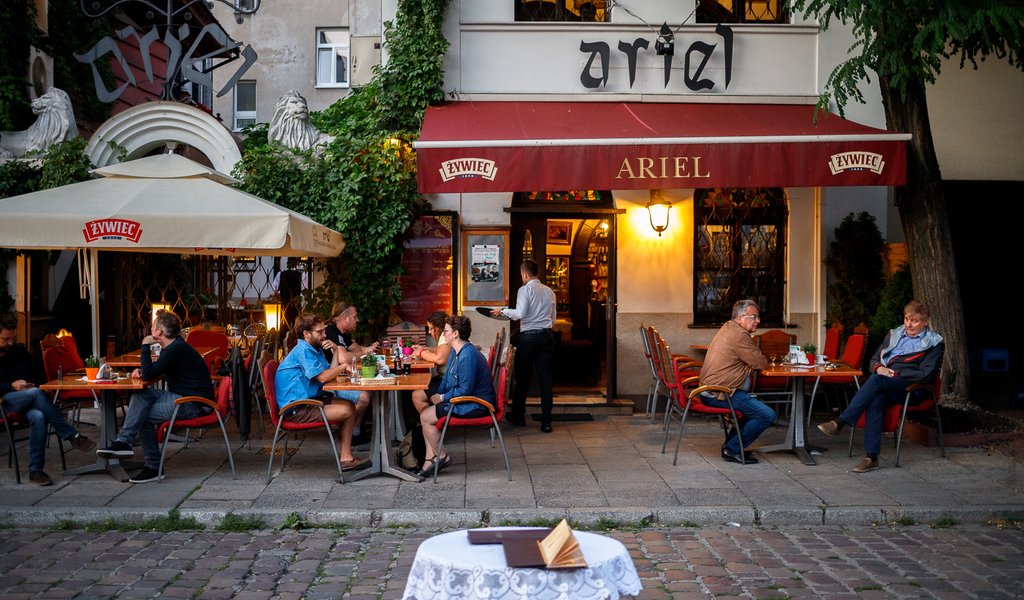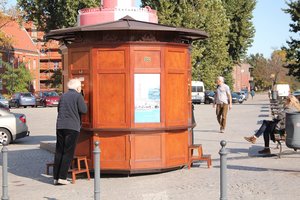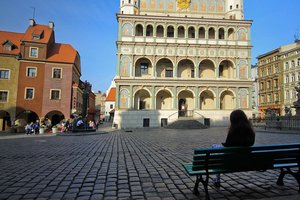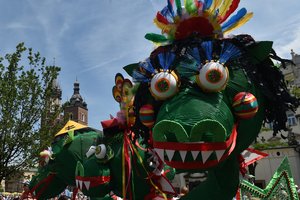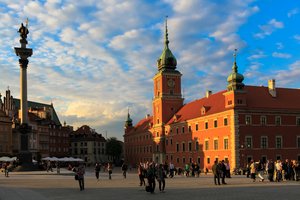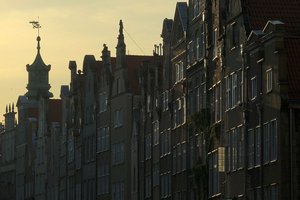A walk along Cracow’s Kazimierz district
Kazimierz, one of Cracow’s flagship districts, is vibrant with cultural and café life. Its cosy streets, now lined with antique shops and romantic restaurants, have been witnesses to the history of the city and its inhabitants, including the Jewish minority that lived in the district in great numbers until the outbreak of World War II.
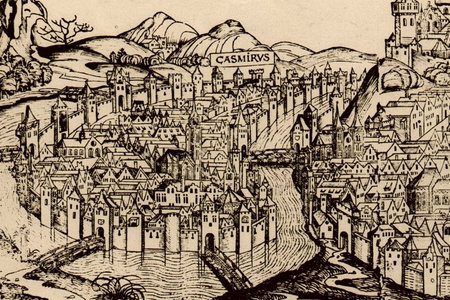 Academy on the island
Academy on the island
Kazimierz was named after its founder – King Casimir the Great who is famous in Polish history for his achievements as a great reformer. ‘He found a Poland made of wood and left it made of stone’ – this well-known phrase describes King Casimir’s legacy, which includes the famous district and Cracow Academy. Set up in the district of Kazimierz, this first Polish university has been in operation for centuries and nowadays is known as the Jagiellonian University. The new urban centre was to be an answer to the rebellion against the previous ruler, Ladislaus the Short, which was raised by the inhabitants of Cracow at the end of XIV century. In order to avoid such events in future, Ladislaus’s successor, King Casimir the Great, set up a town on an island on the Vistula River in 1355. The town was blooming as the Academia and numerous churches were erected there, however, with time, investments were halted by the river which regularly flooded the area. In XV century the Jewish community was resettled on the island, where they built their own district surrounded by a wall. Enclosed by today’s Miodowa, sw. Wawrzynca, Waska, Jozefa, and Bozego Ciala streets, the quarter quickly became an autonomous entity governed by Jew authorities and an important centre of Jewish culture in Poland and abroad.
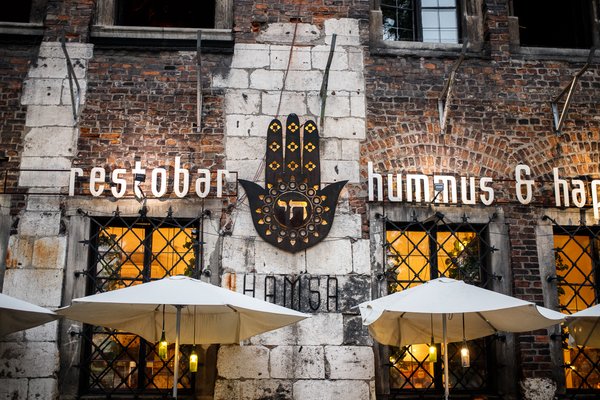 The history of changes
The history of changes
It was only at the turn of XVIII and XIX century that Kazimierz became part of Cracow: the walls separating the Jewish quarter were pulled down and part of the river was filled with rocks and soil to connect the district to the main land. When Poland was partitioned between its three neighbours, Cracow’s status changed – what was once a proud seat of Polish kings now became a provincial city in impoverished Galicia. After obtaining their civil rights, the more affluent inhabitants of the district started to gradually leave it, moving to the city centre and better assimilating with the ethnically Polish population.
In years before World War II, Jews constituted a quarter of Cracow’s population. Kazimierz remained the hub of their social life, as most Jewish institutions, including political parties, were located there. It was also the centre of religious life for the Jewish minority, and a place of sports and artistic groups, as well as charity and cultural organisations. The Jewish community maintained seven synagogues, while private persons and religious associations ran various houses of prayer.
The darkest times for the Jewish Kazimierz came with the Nazi German occupation. As the Nazi executed their plan of the genocide of European Jews, the Kazimierz Jews had their rights gradually limited, and their property pillaged. Then they were isolated in ghettos and finally exterminated in Auschwitz, Belzec, and Plaszow concentration camps.
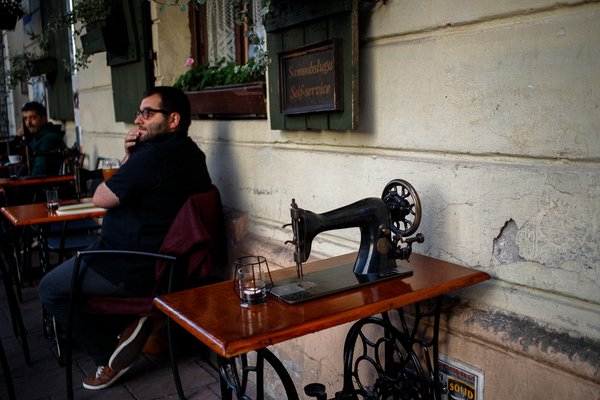 Today’s routes
Today’s routes
In the years following World War II, the district, full of dilapidated and uninhabited buildings, had a bad reputation. However, as soon as in 1978, Kazimierz was listed as a World Heritage site by UNESCO, together with Cracow’s Old Town and the Wawel Royal Castle. The fall of the communist regime started its golden age, when Kazimierz once again became a place of meetings and multicultural exchange. An event that has certainly contributed to this development is the Jewish Culture Festival. Organized since 1988, it is one of the world’s biggest and oldest festivals of this kind. Over the last decades Kazimierz has become home to artists, and numerous art galleries and cafés have lined its streets, the most popular being those situated in Szeroka, Izaaka, and Jozefa streets, as well as around Plac Nowy (the New Square).
When planning a sightseeing route along Kazimierz, one should take into consideration its mediaeval religious buildings, including synagogues. The most popular is the Old Synagogue which was built in XV century and boasts the most valuable exhibits of the Judaica museum collection. Another place worth visiting is the High Synagogue which was named after its prayer room that is situated upstairs – the only one of this kind in Poland. Kazimierz is also a place of two Jewish cemeteries – Remuh (the Old Cemetery) and the New Jewish Cemetery.
 Sauntering along the streets of Kazimierz, one should also make sure to visit one of the most beautiful and famous churches in Cracow, the Church of St Michael the Archangel and St Stanislaus Bishop and Martyr, commonly known as the Church on the Rock. Situated on a small hill of Jurassic white limestone, this baroque basilica is a place of religious cult commemorating the martyr’s death of St Stanislaus who was sentenced to death by the Polish king Bolesław II the Generous. With time the Church on the Rock became the national pantheon. Its Crypt of the Distinguished Persons is the burial place for such eminent Poles as the mediaeval chronicler Jan Długosz, the modernist painter Jacek Malczewski, or the poet and Nobel Prize winner Czesław Miłosz.
Sauntering along the streets of Kazimierz, one should also make sure to visit one of the most beautiful and famous churches in Cracow, the Church of St Michael the Archangel and St Stanislaus Bishop and Martyr, commonly known as the Church on the Rock. Situated on a small hill of Jurassic white limestone, this baroque basilica is a place of religious cult commemorating the martyr’s death of St Stanislaus who was sentenced to death by the Polish king Bolesław II the Generous. With time the Church on the Rock became the national pantheon. Its Crypt of the Distinguished Persons is the burial place for such eminent Poles as the mediaeval chronicler Jan Długosz, the modernist painter Jacek Malczewski, or the poet and Nobel Prize winner Czesław Miłosz.
The most famous secular monuments in Cracow include Mykwa Wielka (the Great Mikhev) and the former marketplace Wolnica Square along with the town hall. Most of all, Kazimierz is a place of social gatherings and entertainment, which brings together interesting people from all over the world as they become enthralled with the district’s extraordinary history and atmosphere that is etched in its walls.
Poland.pl
The Jewish Culture Festival
The Jewish Culture Festival has been organized in Cracow, the capital of Lesser Poland, since 1988, which makes it one of the oldest and biggest events celebrating Jewish culture. Its goal is to present the contemporary culture created by Jews living in Israel as well as by the Diaspora that is scattered all over the world. Subsequent editions of the festival encompass about 200 events: lectures, workshops, discussions, and concerts, including ‘Szalom na Szerokiej’ (Shalom in Szeroka street) – a seven-hour review of Jewish music.
2020 will mark the 30th jubilee edition of the Festival which will last from 26 June to 5 July. The details of the festival programme will be announced in March.
17.10.2019
